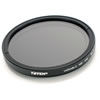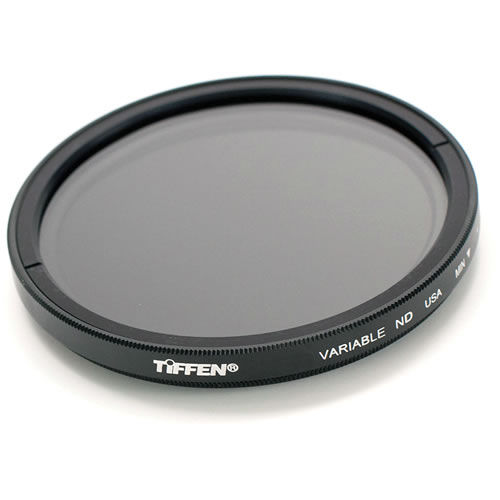- Rental ID: R306114-C • Webcode: 261882
Product Highlights
- Variable ND Neutral Density Filter
- 2-8 Stop Reduced Exposure
- 72mm Diameter Thread
- Allows for Use of Wider Aperture

Tiffen Tiffen 72mm Variable ND Filter
$10.00/day or weekend
$30.00/week Add to Request
$30.00/week Add to Request
Overview
Variable ND Filter | 2 to 8-Stop
The Tiffen Variable ND filter is a versatile and flexible tool, affording you the convenience of using several Neutral Density filters all in one. Primarily used as a photographic tool for controlling depth of field and exposure, the Variable ND is being sought in the video market as well because it is fast, easy to use, small, lightweight, and does not require additional accessories such as a matte box.
Key Features:
- Provides 2 to 8 stops of light control
- Thin profile ring - 9mm
- Wider outer optic t help reduce vignetting at wide angles
- Comes in Tiffen Professional packaging with padded black nylon pouch
- Made with high quality optical glass using Tiffen's ColorCore technology
- Made in the USA
- 10-year warranty
What's Included
Variable Neutral Density FilterPadded Black Nylon Pouch
Product Specifications
| Detailed Specifications | |
|---|---|
| Type | Variable Neutral Density Filter |
| Size | 77mm 9mm thick |
| Grade | Not Applicable |
| Filter Factor | Depends on the degree of filtration dialed-in |
| Multi-Coated | Not Applicable |
| Rotating | Yes |
| Effect | Reduces the amount of light reaching the film or sensor |
| Application | Outdoor, nature, scenic photography, video |
| Colour Temperature | Not Applicable |
| Construction | ColorCore glass |
| Front Filter Thread Size | 77mm |
| Front Lens Cap Size | 77mm |


